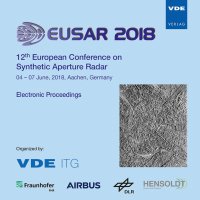Bistatic spaceborne P-band SAR for satellite «AIST-2D»
Konferenz: EUSAR 2018 - 12th European Conference on Synthetic Aperture Radar
04.06.2018 - 07.06.2018 in Aachen, Germany
Tagungsband: EUSAR 2018
Seiten: 6Sprache: EnglischTyp: PDF
Persönliche VDE-Mitglieder erhalten auf diesen Artikel 10% Rabatt
Autoren:
Goriachkin, Oleg V.; Borisenkov, Aleksey V. (Povolzhskiy State University of Telecommunications and Informatics, Russia)
Luchin, Dmitry V. (Samara branch of Radio Research and Development Institute, Russia)
Tkachenko, Sergey I. (Samara State University, Russia)
Zhengurov, Boris G. (Samara Space Centre, Russia)
Inhalt:
The proposed spaceborne Bistatic P-band SAR (BiSAR) is designed to operate on board of small “Aist-2D” satellite with the intention for the further development of the Earth radar surveillance technology in P-band. Onboard BiSAR equipment consists of a multi-mode impulse transmitter operating at a carrier frequency of 435 MHz with adjustable signal bandwidth up to 30 MHz. The transmitter uses a Yagi–Uda antenna with a linear polarization and a power gain of 5 dB. Ground-based equipment uses a two-channel tuned radio frequency receiver with up to 110 dB power gain. The receiving antenna for the reflected BiSAR channel consists of two Yagi antennas with circular polarization coupled into a stacked antenna array with 20 dB power gain. The direct channel uses one ground-based receiving Yagi antenna with circular polarization and 9 dB power gain. “Aist-2D” satellite was successfully launched in year 2016, however, we were unable to switch on the onboard BiSAR equipment and conduct the experiment. Instead, the ground-based experiment was conducted, using the same set of equipment. The results obtained during the experiment prove that the proposed BiSAR system produces an image with expected characteristic and spatial resolution.


